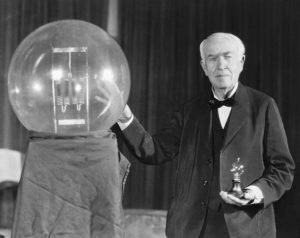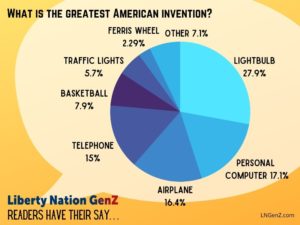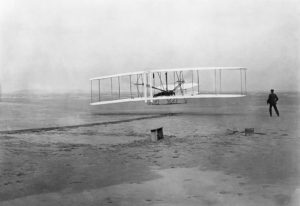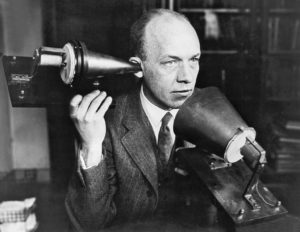-
Animals
- All About Aardvarks – Lesson
- All About Aardvarks – Quiz
- Babirusa – What a Pig! – Lesson
- Babirusa – What a Pig! – Quiz
- The Chimpanzee – The Nearly Human Primate – Lesson
- The Chimpanzee – The Nearly Human Primate – Quiz
- The Donkey – The Intelligent Yet Stubborn Animal – Lesson
- The Donkey – The Intelligent Yet Stubborn Animal – Quiz
- Electric Eels – Shocking Details – Lesson
- Electric Eels – Shocking Details – Quiz
- Ferrets – Playful, Fun-Loving Animals – Lesson
- Ferrets – Playful, Fun-Loving Animals – Quiz
- Giraffe – The Tallest Living Land Animal – Lesson
- Giraffe – The Tallest Living Land Animal – Quiz
- The Hedgehog – Lesson
- The Hedgehog – Quiz
- Iguanas – The “Chickens of the Tree” – Lesson
- Iguanas – The “Chickens of the Tree” – Quiz
- Jaguar – The Largest Cat on the American Continent – Lesson
- Jaguar – The Largest Cat on the American Continent – Quiz
-
Space and Astronomy
- Mars: Just the Beginning? – Lesson
- Mars: Just the Beginning? – Quiz
- Six Billion ‘Earth-like’ Planets in the Milky Way Galaxy? – Lesson
- Six Billion ‘Earth-like’ Planets in the Milky Way Galaxy? – Quiz
- Did NASA Scientists Find Another Universe? – Lesson
- Did NASA Scientists Find Another Universe? – Quiz
- A New Planet Was Discovered – And Old Theories Must Change – Lesson
- A New Planet Was Discovered – And Old Theories Must Change – Quiz
- SpaceX Completes First Civilian Trip to Space – Lesson
- SpaceX Completes First Civilian Trip to Space – Quiz
- First Movie Filmed in Space Successful – Lesson
- First Movie Filmed in Space Successful – Quiz
- James Webb Telescope Heads to Deep Space – Lesson
- James Webb Telescope Heads to Deep Space – Quiz
- A Lot Is Happening on and Around the Moon – Lesson
- A Lot Is Happening on and Around the Moon – Quiz
- First-Ever Picture Taken of the Milky Way’s Black Hole – Lesson
- First-Ever Picture Taken of the Milky Way’s Black Hole – Quiz
- First James Webb Telescope Images Revealed – Lesson
- First James Webb Telescope Images Revealed – Quiz
- Buzz Aldrin Sells Jacket from the Moon Landing – Lesson
- Buzz Aldrin Sells Jacket from the Moon Landing – Quiz
- Humans at Home on the Moon – Could It Really Happen in This Decade? – Lesson
- Humans at Home on the Moon – Could It Really Happen in This Decade? – Quiz
- Winter on Mars – Lesson
- Winter on Mars – Quiz
- Pictures of Mars Show Hidden Figures – Lesson
- Pictures of Mars Show Hidden Figures – Quiz
- Jupiter and Venus Appear to ‘Kiss’ – Lesson
- Jupiter and Venus Appear to ‘Kiss’ – Quiz
- The James Webb Telescope Finds Six Ancient Galaxies – Lesson
- The James Webb Telescope Finds Six Ancient Galaxies – Quiz
- Would an EpiPen Work in Space? – Lesson
- Would an EpiPen Work in Space? – Quiz
- Satellite Spots Earth’s Second Moon? – Lesson
- Satellite Spots Earth’s Second Moon? – Quiz
- Space Mining – The Race is On and China is Leading – Lesson
- Space Mining – The Race is On and China is Leading – Quiz
- How Did Gold and Platinum Arrive on Earth – Lesson
- How Did Gold and Platinum Arrive on Earth – Quiz
- Odysseus Has Found Its New Home – Lesson
- Odysseus Has Found Its New Home – Quiz
-
The Environment
- Red Tide: No Fun in the Florida Sun – Lesson
- Red Tide: No Fun in the Florida Sun – Quiz
- Leaded Gas Eradicated from the World, Says United Nations – Lesson
- Leaded Gas Eradicated from the World, Says United Nations – Quiz
- COVID Plastic Waste: A Big Problem for Oceans – Lesson
- COVID Plastic Waste: A Big Problem for Oceans – Quiz
-
Archaeology and Paleontology
- Ancient Human Species Discovered – Lesson
- Ancient Human Species Discovered – Quiz
- Biblical City of Sodom Found in the Jordan Valley? – Lesson
- Biblical City of Sodom Found in the Jordan Valley? – Quiz
- Antarctic Explorer’s Ship Found After a Century – Lesson
- Antarctic Explorer’s Ship Found After a Century – Quiz
- Newly Found Diary Shows How Ancient Egyptians Built the Pyramids – Lesson
- Newly Found Diary Shows How Ancient Egyptians Built the Pyramids – Quiz
- Study Shows ‘Apocalyptic Dust’ Might Have Killed the Dinosaurs – Lesson
- Study Shows ‘Apocalyptic Dust’ Might Have Killed the Dinosaurs – Quiz
- Ancient Celestial Calendar Found in a 2,000-Year-Old Tomb – Lesson
- Ancient Celestial Calendar Found in a 2,000-Year-Old Tomb – Quiz
- Hiker Stumbles Upon Ancient Fossils While Hiking in Italy – Lesson
- Hiker Stumbles Upon Ancient Fossils While Hiking in Italy – Quiz
-
Technology
- 3 Reasons to Protect Your Online Privacy – Lesson – VIDEO
- The Rise of Deepfakes – Lesson
- The Rise of Deepfakes – Quiz
- A New Mayflower Voyage, Captained by AI Technology – Lesson
- A New Mayflower Voyage, Captained by AI Technology – Quiz
- The Latest Supercomputer Is Breaking Speed Barriers – Lesson
- The Latest Supercomputer Is Breaking Speed Barriers – Quiz
- LNGenZ Survey: What is the Greatest American Invention? – Lesson
- LNGenZ Survey: What is the Greatest American Invention? – Quiz
- School and ChatGPT – Is it Cheating? – Lesson
- School and ChatGPT – Is it Cheating? – Quiz
- Artificial Intelligence Gets an Upgrade? – Lesson
- Artificial Intelligence Gets an Upgrade? – Quiz
- Scientists Plan to Bring the Dodo Bird Back from Extinction – Lesson
- Scientists Plan to Bring the Dodo Bird Back from Extinction – Quiz
- Is There Too Much Technology in Education? – Lesson
- Is There Too Much Technology in Education? – Quiz
- AI Coming to a Keyboard Near You – Lesson
- AI Coming to a Keyboard Near You – Quiz
- Is the NSA Browsing Your Browser History? – Lesson
- Is the NSA Browsing Your Browser History? – Quiz
- AI Can’t Compete With People Skills – Lesson
- AI Can’t Compete With People Skills – Quiz
- How Social Media Is Hazardous to Generation Z – and Beyond – Lesson
- How Social Media Is Hazardous to Generation Z – and Beyond – Quiz
- Surgeon General’s Warning for Social Media – Lesson
- Surgeon General’s Warning for Social Media – Quiz
- Pay With Your Face: Is the End of Cash Nigh? – Lesson
- Pay With Your Face: Is the End of Cash Nigh? – Quiz
- Can Artificial Intelligence Really End Cancer? – Lesson
- Can Artificial Intelligence Really End Cancer? – Quiz
-
Mind and Body
- Teen Scientist’s Invention Mixes Music with Mental Health – Lesson
- Teen Scientist’s Invention Mixes Music with Mental Health – Quiz
- Man Receives First Pig Heart Transplant – Lesson
- Man Receives First Pig Heart Transplant – Quiz
- Sniffing Out the Truth About Smells – Lesson
- Sniffing Out the Truth About Smells – Quiz
- The Power of Playtime – Lesson
- The Power of Playtime – Quiz
- Is Language Getting More Emotional? – Lesson
- Is Language Getting More Emotional? – Quiz
- Scientists Say Household Chores Help Kids’ Brains – Lesson
- Scientists Say Household Chores Help Kids’ Brains – Quiz
- Transplant of Pig Kidney Into a Human Successful So Far – Lesson
- Transplant of Pig Kidney Into a Human Successful So Far – Quiz
- The Lack of a College Degree Is Shortening Lifespans – Lesson
- The Lack of a College Degree Is Shortening Lifespans – Quiz
-
Flora and Fauna
- Dogs Can Tell When Humans Make a Mistake, Says Study – Lesson
- Dogs Can Tell When Humans Make a Mistake, Says Study – Quiz
- Jonathan: The World’s Oldest Living Tortoise – Lesson
- Jonathan: The World’s Oldest Living Tortoise – Quiz
- The Monarch Butterfly Makes a Surprise Return – Lesson
- The Monarch Butterfly Makes a Surprise Return – Quiz
- Bat Falcon Spotted in the United States for the First Time – Lesson
- Bat Falcon Spotted in United States for the First Time – Quiz
- Charles Darwin’s Notebooks Mysteriously Returned after 20 Years – Lesson
- Charles Darwin’s Notebooks Mysteriously Returned after 20 Years – Quiz
- Six Endangered Red Wolf Pups Born in Wildlife Refuge – Lesson
- Six Endangered Red Wolf Pups Born in Wildlife Refuge – Quiz
- Scientists Record Never-Before-Heard Whale Call – Lesson
- Scientists Record Never-Before Heard Whale Call – Quiz
- Underwater Meadow Gets Credit as the World’s Largest Living Plant – Lesson
- Underwater Meadow Gets Credit as the World’s Largest Living Plant – Quiz
- Scientists Trying to Bring the Tasmanian Tiger Back from Extinction – Lesson
- Scientists Trying to Bring the Tasmanian Tiger Back from Extinction – Quiz
- Jurassic Era Insect Found at Arizona Walmart – Lesson
- Jurassic Era Insect Found at Arizona Walmart – Quiz
- The Comeback of the Nearly Extinct Earless Lizard – Lesson
- The Comeback of the Nearly Extinct Earless Lizard – Quiz
- A Strange Golden Orb Found on the Ocean Floor Is Alive! – Lesson
- A Strange Golden Orb Found on the Ocean Floor Is Alive! – Quiz
- Peanut: The Pet Chicken With a World Record – Lesson
- Peanut: The Pet Chicken With a World Record – Quiz
-
Mathematics
- Metric vs. Imperial: A Weighty Debate in Britain – Lesson
- Metric vs. Imperial: A Weighty Debate in Britain – Quiz
- The Abacus is Helping Kids Master Math Skills – Lesson
- The Abacus is Helping Kids Master Math Skills – Quiz
- Retired Engineer Discovers ‘Einstein’ Shape – Lesson
- Retired Engineer Discovers ‘Einstein’ Shape – Quiz
LNGenZ Survey: What is the Greatest American Invention? – Lesson

Thomas Edison and his lightbulb (Getty Images)
Most polls are aimed at adults – but LN GenZ offers young people a chance to be heard.
Liberty Nation GenZ recently asked its readers which American invention is the greatest. There’s no doubt the United States has spent a long time on the cutting edge of technology, from Thomas Edison and his lightbulb to today’s Silicon Valley. Even Benjamin Franklin, one of the nation’s Founding Fathers, was a keen inventor and scientist.
Lots of polls exist for adults, but young people are rarely asked what they think. We hoped to present something a little different and get our readers’ opinions on American technology. So, what did the respondents say?
Great American Inventions
We presented readers with eight American inventions as well as an “other” option and a comments box where people could give their own answers. Here are the results:

Lightbulb – 27.9%
Personal Computer –17.1%
Airplane – 16.4%
Telephone – 15%
Basketball – 7.9%
Other – 7.1%
Traffic Lights – 5.7%
Ferris Wheel – 2.29%
Let’s take a look at the most popular choices:
The Lightbulb: “Many of these things are useful but the bulb is the most useful,” said one respondent. This invention by Thomas Edison was the clear winner among our readers. Before the lightbulb, people used reeds and candles to provide light at night time – but the electric lightbulb finally gave a reliable and efficient light source. It also reduced the risk of fire and changed lifestyles, making people less reliant on the natural cycles of day and night. Today, Edison’s bulb is going out of favor, to be replaced by new options like LED bulbs – but none of this would be possible without the original lightbulb.
One commenter highlighted Edison’s persistence: “Thomas Edison 1879 was trying to invent light bulbs and he did but it took him 999 tries, and then on the 1000th try the light bulb [lit]!” Amazingly, it actually did take Edison over 10,000 tries to perfect his bulb. He reportedly said: “I have not failed. I have just found 9,999 ways that do not work.”

The Kenbak-1 computer (Photo by Mark Madeo/Future via Getty Images)
The Personal Computer: Computers have been around in some form since the ancient world, and many people have contributed to this invention over the years. However, the first official “personal computer” was invented by American John V. Blankenbaker in 1970. The Kenbak-1 model was first sold in early 1971, though only 50 were ever made, and just 40 were sold due to their high price tag. Blankenbaker envisioned a world in which everyone could buy their own computer – luckily it was around the same time that engineers at Intel developed the microprocessor, which made it more practical to create computers for the masses.
Today, the United States is still leading the world on computer technology, with the fastest supercomputer being built in Tennessee.
The Airplane: The plane was a popular choice for LNGenZ’s readers, with comments like, “Because of the airplane, we can fly to different places faster” and “we can travel faster if we want to go international.”

Wright brothers’ first flight (Getty Images)
William and Orville Wright are two of the most famous brothers in American history – all because of their success in creating a working airplane. The boys’ father was a traveling salesman, and one day he came home with a gift for the children: a small model helicopter. The toy sparked an interest in flight and mechanics, and the brothers spent their lives investigating the two topics. They sold bicycles and eventually began to experiment with air machines.
On December 17, 1903, Wilbur and Orville achieved the first controlled flight of a motorized plane. Wilbur flew the plane for 59 seconds and covered a distance of 852 feet. Despite the accomplishment, their plane didn’t get much attention in the US, and the two brothers moved to Europe where they had more success.
The Telephone: The origin of the telephone is rather controversial, but most people give credit to Alexander Graham Bell, who was the first to get a patent for the device. After working on technology to improve the telegraph – a way to send messages through a wire – Bell realized that longer messages and even whole conversations could be transmitted over large distances. On March 10, 1876, the inventor made history by placing the first telephone call, meant for his assistant Thomas Watson, who was in a nearby room. He said: “Mr Watson, come here – I want to see you.”

A man using one of Alexander Graham Bell’s first telephones, circa 1915. (Photo by Underwood & Underwood/Underwood Archives/Getty Images)
Today, we can place calls not just using the landline phones that evolved from Bell’s machine, but we can communicate using technologies from cell phones to online programs like Zoom. Without that first phone call, the modern world of communication might never have been possible.
Inventing the Modern World
Of course, the modern world might have turned out differently if even one of these inventions had been missing. One reader observed, “almost all of them include electricity.” This is true – the US has been a key innovator in the use of electricity. From Benjamin Franklin’s experiments with lighting to Edison, Bell, and others, many of the world’s first electrical devices had their origins in America.
Other Great Inventions and Comments
Here at LNGenZ we decided to limit our survey just to American inventions – but we did get some interesting suggestions from readers for other options when it comes to useful creations. Here are some of the ideas:

(Photo by Giulio Andreini/Education Images/Universal Images Group via Getty Images)
Clothes: While clothes are extremely useful items for warmth and modesty, they existed long before the United States. Humans would wear fur and animal skins in prehistoric times – from about 100,000 to 500,000 years ago. Fabrics made from plants are more recent with fibers made from flax seeds thought to be about 30,000 years old. Other materials like silk and cotton originate from about 5,000 – 3,000 BC.
Hairbows: “They’re great for cheerleaders to wear in their hair,” suggested one student. While hair-tying implements have existed for thousands of years, from string to leather to clips made from metal or animal horn, today we have the convenience of elastic. In fact, elastics and rubber bands were a key invention in the world of textiles – they make it possible to create stretchy clothes, as well as a lot of other flexible items. Elastic and rubber bands were actually invented in England during the Industrial Revolution. Thomas Hancock was working on rubber technology and created the first elastic fibers in the 1820s. Meanwhile, the first rubber bands were patented by Englishman Stephen Perry in 1845.
Videogame companies: Video games are some of the most popular forms of entertainment today. There is actually a good argument to say that video games are an American invention, with physicist William Higinbotham creating the game “Tennis for Two” in 1958 for the Brookhaven National Laboratory. Other early contenders include “OXO” (a tic-tac-toe game) and a draughts game, both invented in 1952 by British engineers.

John Logie Baird working on an early television (Photo by The Stanley Weston Archive/Getty Images)
Television: The television was another popular response for the greatest American invention. But is it actually American? It’s hard to pinpoint one person who made the TV possible, but the first successful demonstration of a television was held by Scottish engineer John Logie Baird, in 1927. A year later, Baird’s Television Development Company successfully sent a television transmission from London to New York. However, competition quickly arose, and new companies quickly began developing the technology further.
Indoor plumbing: You may be surprised to hear that indoor plumbing hasn’t actually been around that long – or has it? Ancient Greece and Egypt actually invented flushing toilets and complex sewage systems, while the Romans used plumbing for their public baths. However, in the Middle Ages people would just throw their waste into the street, leading to a much less hygienic environment. The first modern flushing toilet was created by Sir John Harington for Queen Elizabeth I in the 1500s, but she was too scared to use it! The White House had running water installed in 1833, but it wasn’t until the 1900s that indoor plumbing actually became common in the US or anywhere else.
Finally, the greatest American invention could be the United States itself! Rising to become a world superpower, the free market ideals made the US the world’s richest country. The United States was the first country to create a complete, written national Constitution – an “invention” that has motivated millions of people who aspire to freedom.